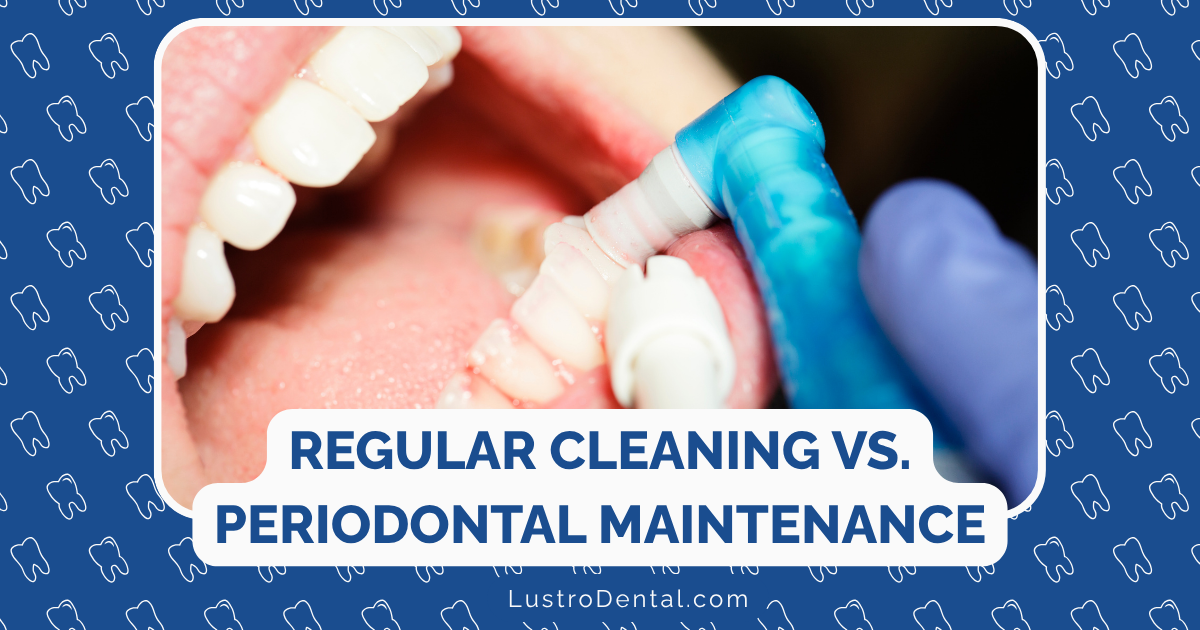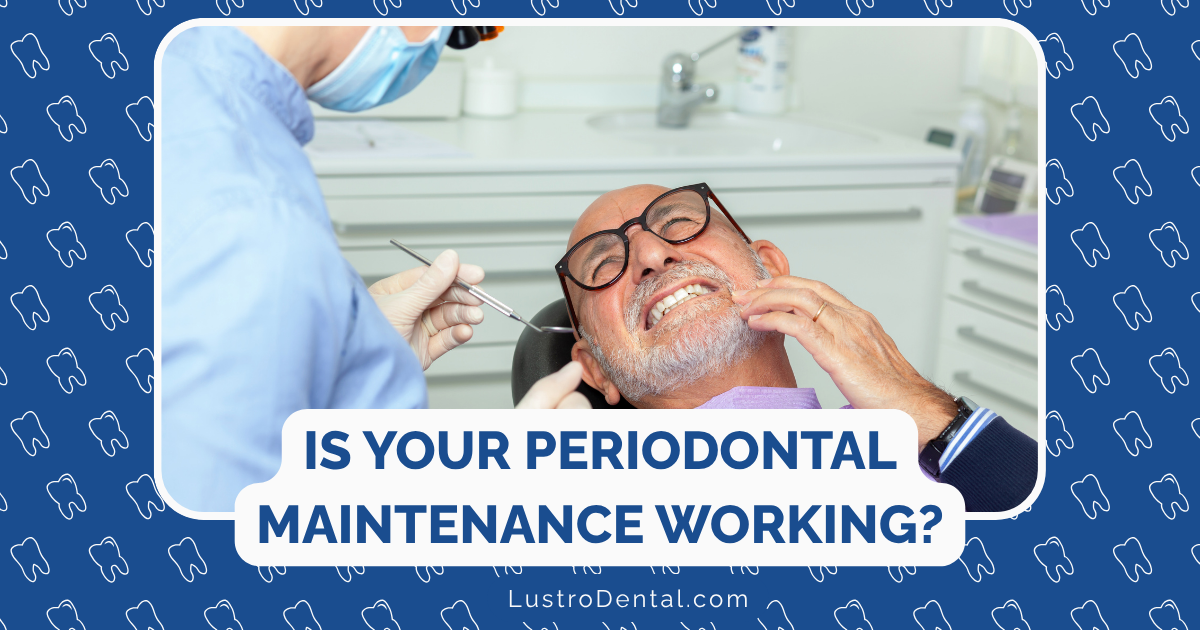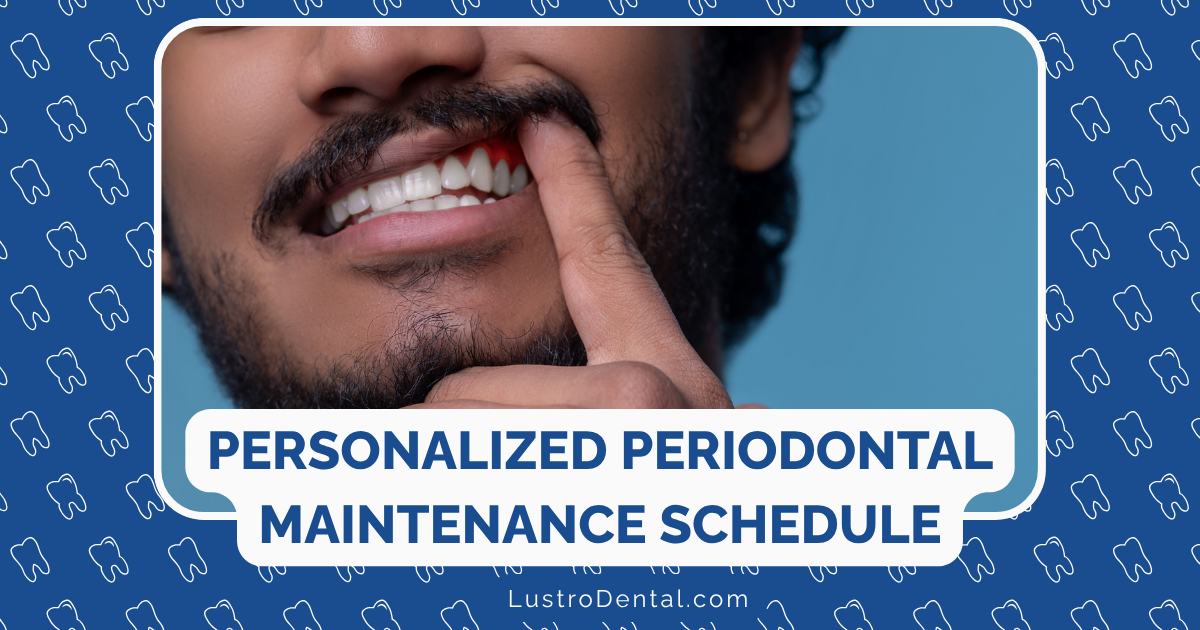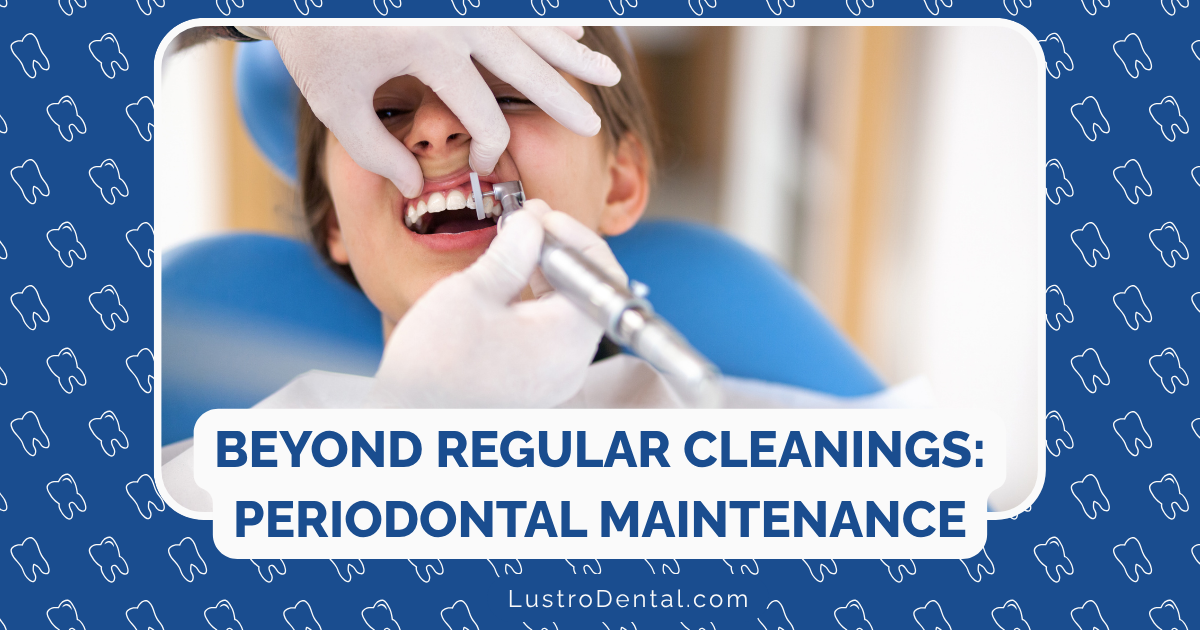Home Care Between Periodontal Visits: Essential Products and Techniques
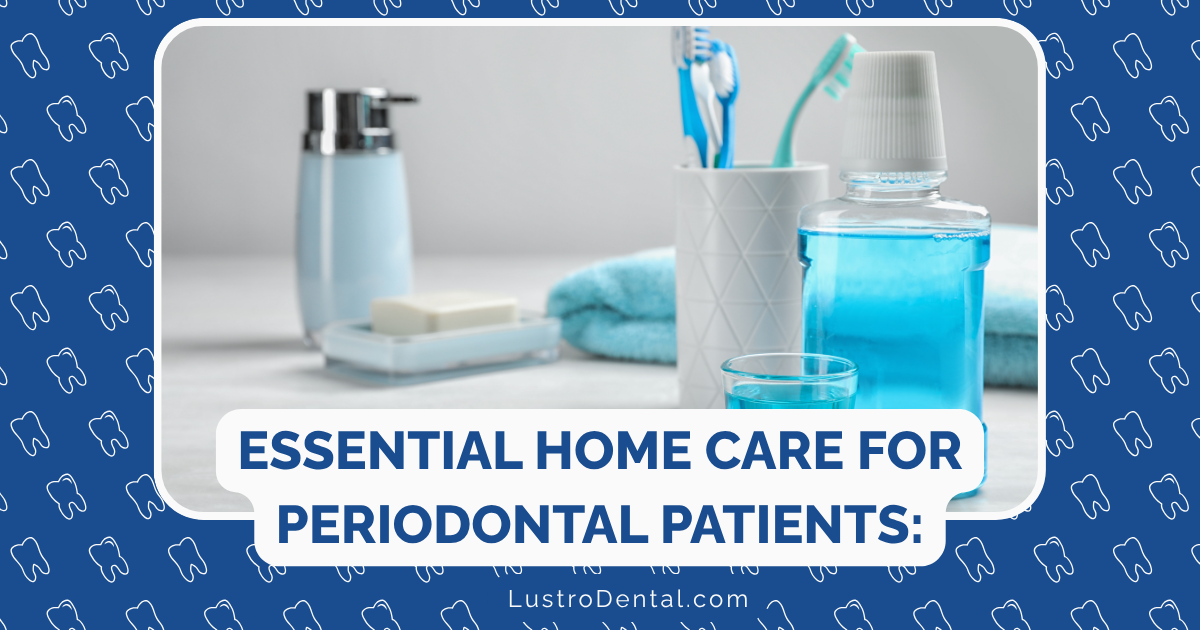
If you’re undergoing periodontal maintenance, you already understand that gum disease is a chronic condition requiring ongoing care. While those regular maintenance visits with your dental professional are crucial, what happens between appointments is equally important—perhaps even more so.
The truth is, even the most thorough professional cleaning can’t keep your gums healthy if you’re not maintaining proper periodontal home care during the 3-4 months between visits. As someone who’s worked with countless periodontal patients, I’ve seen firsthand how the right home care routine can make the difference between stable, healthy gums and recurring inflammation and infection.
In this guide, I’ll share the most effective products and techniques to help you maintain your periodontal health between professional visits, based on current research and clinical experience.
Why Home Care Is Critical for Periodontal Patients
Before diving into specific products and techniques, let’s understand why periodontal home care is particularly important for periodontal patients:
- Bacterial recolonization begins immediately after professional cleaning
- Periodontal pockets provide protected environments where bacteria can multiply
- Compromised attachment means less natural protection against bacterial invasion
- Individual susceptibility factors (genetics, systemic conditions) remain constant
- The chronic nature of periodontal disease requires continuous management
Dr. Joan Otomo-Corgel, former president of the American Academy of Periodontology, explains: “Professional care alone cannot maintain periodontal health. The daily disruption of bacterial biofilm by the patient is essential for long-term success.”
Essential Tools for Effective Periodontal Home Care
1. The Foundation: Choosing the Right Toothbrush
Electric Toothbrushes
Research consistently shows that electric toothbrushes remove more plaque than manual brushing, making them particularly valuable for periodontal patients.
Recommended features:
- Pressure sensor to prevent excessive force that can damage gums
- Timer to ensure adequate brushing time (2-3 minutes)
- Multiple cleaning modes including a gentle/sensitive setting
- Small brush head to reach posterior teeth and difficult angles
Top options for 2025:
- Oral-B iO Series – Features micro-vibrations and pressure sensing technology
- Philips Sonicare DiamondClean Smart – Offers app connectivity and specialized gum care mode
- Burst Sonic – More affordable option with charcoal-infused bristles
Technique tip: Even with an electric toothbrush, angle the bristles at 45 degrees to the gumline. Hold the brush in place for a few seconds on each tooth surface rather than scrubbing aggressively.
Manual Toothbrushes
If you prefer a manual toothbrush, choose one with:
- Soft bristles to avoid gum trauma
- Small head for better access to all areas
- Multi-level bristles to clean along the gumline
Technique tip: Use the Modified Bass Technique – place the brush at a 45-degree angle to the gumline, apply gentle pressure so the bristles slip slightly under the gum margin, then vibrate the brush with short back-and-forth motions.
2. Interdental Cleaning: The Most Critical Component
Cleaning between teeth is absolutely essential for periodontal patients, as interdental areas harbor the most pathogenic bacteria and are most prone to disease progression.
Interdental Brushes
For many periodontal patients, interdental brushes are more effective than floss, especially if you have:
- Wider spaces between teeth
- Exposed root surfaces
- Furcation involvements (where roots divide)
- Dental implants
Recommended features:
- Various sizes to match different interdental spaces
- Coated wire core to prevent metal allergies and scratching
- Reusable handles with replaceable brushes for cost-effectiveness
Top options for 2025:
- GUM Soft-Picks Advanced – Flexible rubber bristles, good for sensitive gums
- TePe Interdental Brushes – Color-coded sizes with ergonomic handles
- Curaprox CPS Prime – Ultra-fine bristles with coated wire
Technique tip: Insert the brush gently from the outside (cheek side) of the teeth. Don’t force it—if it doesn’t fit, try a smaller size. Move the brush back and forth a few times in each space.
A 2023 study published in the Journal of Clinical Periodontology found that interdental brushes may be more effective than floss at reducing gingivitis and plaque, though both are beneficial.
Water Flossers
Water flossers use a pressurized stream of water to clean between teeth and below the gumline, making them particularly useful for:
- Deep periodontal pockets
- Fixed dental work like bridges
- Orthodontic appliances
- People with limited dexterity
Recommended features:
- Multiple pressure settings to customize cleaning intensity
- Specialized tips for periodontal pockets or implants
- Adequate reservoir size (600+ mL for countertop models)
- Rechargeable battery for cordless models
Top options for 2025:
- Waterpik Ion – Compact countertop model with 10 pressure settings
- Philips Sonicare Power Flosser 3000 – Quieter operation with pulse technology
- Waterpik Cordless Advanced 2.0 – Portable option with specialized tips
Technique tip: Lean over the sink and close your lips partially around the tip to prevent splashing. Start with the lowest pressure setting and gradually increase as tolerated. Aim the tip perpendicular to the gumline, pausing briefly between each tooth.
A 2023 randomized controlled trial published in the International Journal of Dental Hygiene found that water flossers were more effective than interdental brushes at reducing gingival inflammation after four weeks of use.
Traditional Floss
While interdental brushes and water flossers may be more effective for many periodontal patients, traditional floss still has its place, especially for:
- Very tight contacts between teeth
- Areas where interdental brushes won’t fit
- Patients with excellent dexterity
Recommended features:
- Waxed or PTFE (Teflon) floss for easier gliding
- Wider tape-style floss for exposed root surfaces
- Floss holders for easier access to posterior teeth
Technique tip: Use the C-shape technique—wrap the floss around each tooth in a C shape and gently slide it up and down the side of the tooth, extending slightly below the gumline.
3. Specialized Toothpastes for Periodontal Patients
Not all toothpastes are created equal when it comes to periodontal care. Look for these active ingredients:
Antimicrobial Ingredients
- Stannous fluoride (0.454%) – Provides antibacterial effects while also strengthening enamel
- Triclosan – Reduces plaque and gingivitis (though less common due to regulatory concerns)
- Chlorhexidine – Available in prescription toothpastes for short-term use
Anti-inflammatory Ingredients
- Hyaluronic acid – Promotes tissue healing and reduces inflammation
- Coenzyme Q10 – May help reduce gingival inflammation
- Aloe vera – Natural anti-inflammatory properties
Top options for 2025:
- Parodontax – Contains stannous fluoride specifically formulated for gum health
- Colgate PerioGard – Prescription option with chlorhexidine for acute phases
- Crest Gum Detoxify – Stannous fluoride formula that penetrates the gumline
4. Mouth Rinses for Enhanced Protection
Therapeutic mouth rinses can provide additional benefits beyond mechanical cleaning:
Antimicrobial Rinses
- Chlorhexidine gluconate (0.12%) – The gold standard prescription rinse for short-term use
- Cetylpyridinium chloride (CPC) – Over-the-counter option with good antimicrobial properties
- Essential oils (e.g., Listerine) – Clinically proven to reduce plaque and gingivitis
Specialized Rinses
- Fluoride rinses – Provide additional protection against root caries
- Hydrogen peroxide – Helps control acute inflammation (short-term use only)
- Sodium hypochlorite (diluted) – May be prescribed for specific periodontal conditions
Technique tip: For maximum benefit, use mouth rinses after mechanical cleaning (brushing and interdental cleaning), and avoid eating or drinking for 30 minutes afterward. Follow specific timing instructions for prescription rinses like chlorhexidine.
Creating Your Personalized Home Care Routine
The most effective periodontal home care routine is one that you’ll actually follow consistently. Here’s a framework to help you create a personalized approach:
Morning Routine (5-7 minutes)
- Brush thoroughly (2-3 minutes) with an electric toothbrush and specialized toothpaste
- Clean interdentally with your chosen method (interdental brushes, water flosser, or floss)
- Rinse with a therapeutic mouthwash if prescribed
Evening Routine (7-10 minutes)
- Clean interdentally first to remove accumulated debris from the day
- Brush thoroughly (2-3 minutes), paying special attention to the gumline
- Use any prescribed topical medications or rinses
- Consider tongue cleaning to reduce oral bacteria
Additional Considerations
- After-lunch care: If possible, at least rinse with water after eating. A quick interdental cleaning is even better.
- Hydration: Maintain adequate water intake to support saliva production, your body’s natural defense.
- Diet: Limit sugary and acidic foods and beverages that can promote bacterial growth.
Addressing Common Challenges
Sensitivity
If you experience sensitivity during home care:
- Use desensitizing toothpaste containing potassium nitrate or strontium chloride
- Ensure you’re not brushing too hard (use a pressure sensor if available)
- Try warm water in your water flosser instead of cold
- Consider fluoride treatments to strengthen exposed root surfaces
Bleeding Gums
Contrary to what many believe, bleeding gums are a sign to continue—not avoid—cleaning those areas:
- Focus more attention on areas that bleed, not less
- Be gentle but thorough in your cleaning technique
- Increase cleaning frequency in problematic areas
- Consider short-term use of antimicrobial rinses (consult your dental professional)
Limited Dexterity
If arthritis or other conditions limit your manual dexterity:
- Prioritize electric toothbrushes with thick handles
- Consider water flossers over manual interdental cleaning
- Use floss holders or pre-threaded flossers if traditional floss is challenging
- Try interdental brushes with longer handles for better grip
Tracking Your Progress
Monitoring your home care effectiveness can help maintain motivation and identify areas needing improvement:
- Use plaque-disclosing tablets occasionally to visualize missed areas
- Track bleeding sites on a simple chart to monitor improvement
- Take photos of problem areas to monitor changes over time
- Keep a log of your home care routine to ensure consistency
Dr. Michael Wilson, periodontist at Mayo Clinic, recommends: “Self-monitoring between professional visits helps patients take ownership of their periodontal health and makes the partnership with their dental team more effective.”
When to Contact Your Dental Professional Between Visits
While your regular maintenance appointments are scheduled at intervals appropriate for your condition, certain signs warrant contacting your dental professional sooner:
- Increased or persistent bleeding when brushing or flossing
- Swelling or boils on the gums
- Increasing tooth mobility
- Persistent bad taste or odor
- Pain or discomfort in the gums
- Changes in the fit of partial dentures
Early intervention can often prevent minor issues from becoming major problems.
The Bottom Line: Consistency Is Key
The most sophisticated home care products won’t help if they’re used inconsistently or incorrectly. Research shows that:
- Frequency matters more than perfection – Daily interdental cleaning, even if imperfect, is better than perfect technique used occasionally
- Technique improves with practice – Don’t give up on a new tool before giving yourself time to master it
- Personalization improves compliance – Finding products that work with your specific needs and preferences increases the likelihood of consistent use
Remember that periodontal disease is a chronic condition that requires ongoing management. Your professional maintenance visits provide essential care that home methods can’t replicate, but what you do between those visits largely determines your long-term success.
By implementing these evidence-based home care strategies, you’re taking control of your periodontal health and creating the conditions for long-term stability and comfort.


